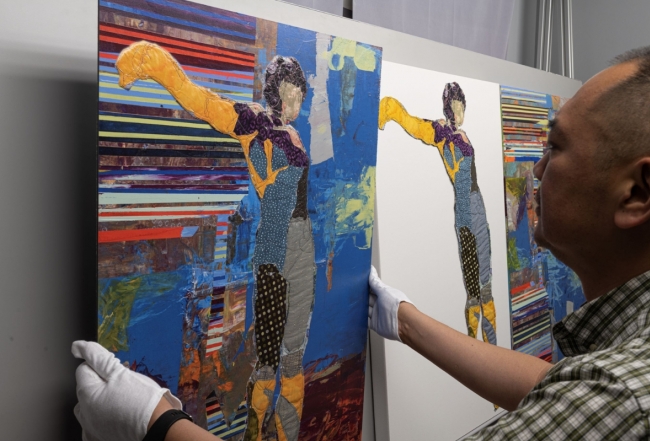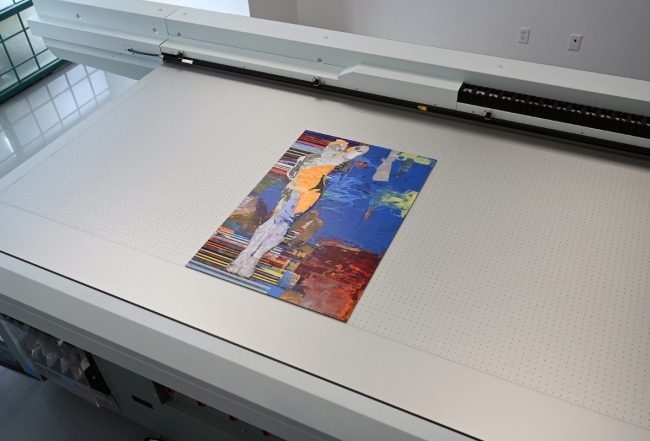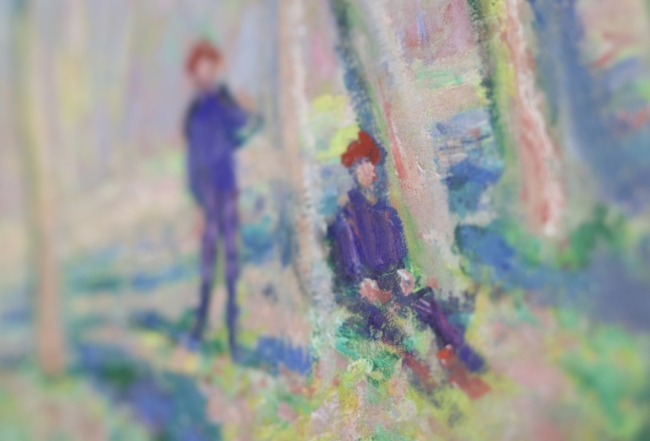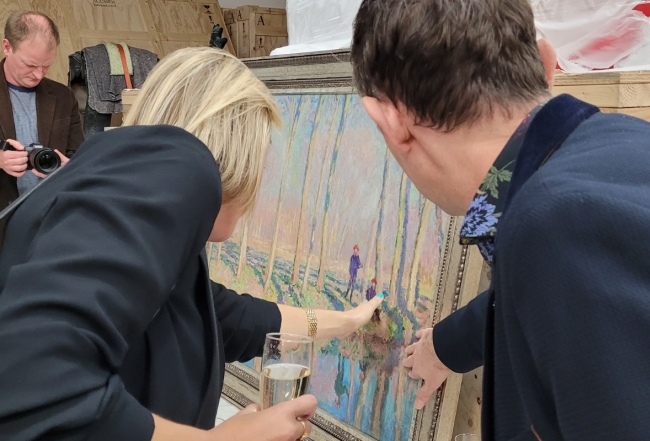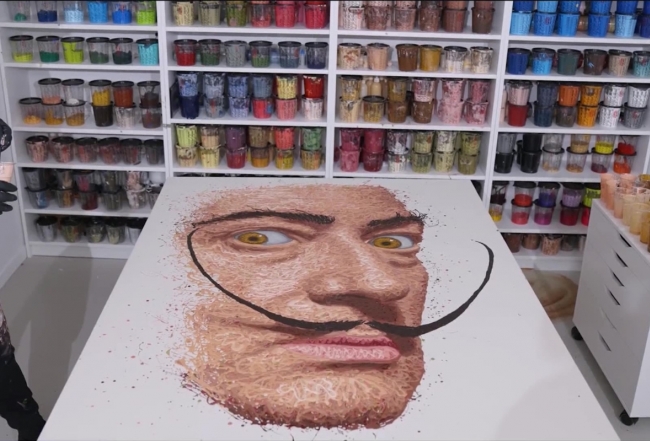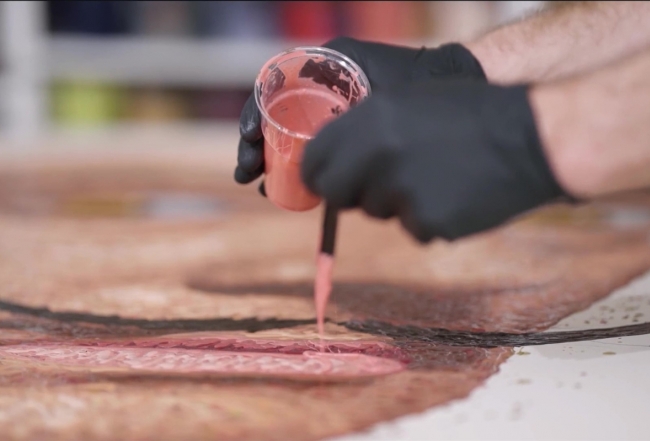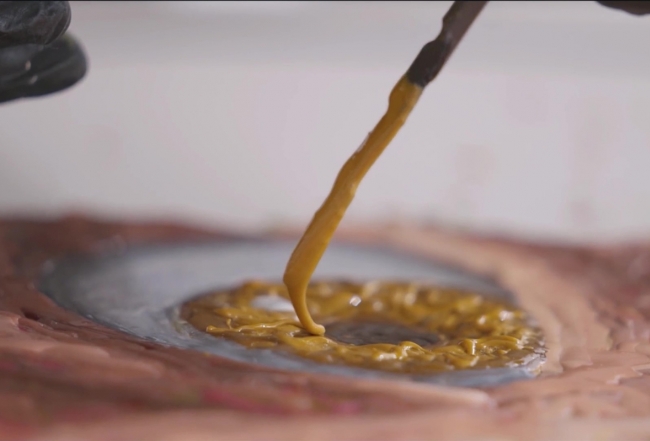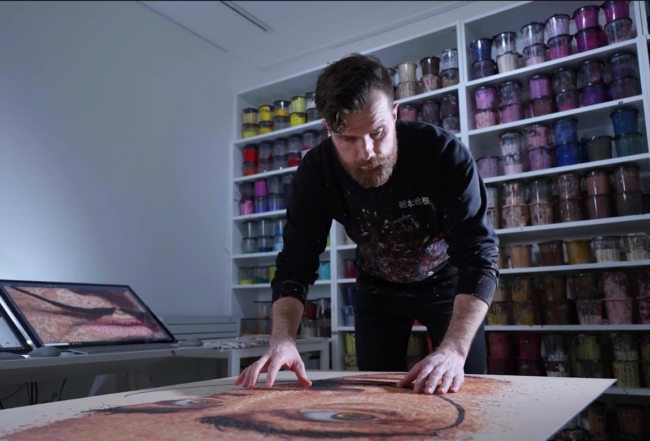Arius: Meet the Company Transforming the Art World
Vancouver-based technology company Arius is fundamentally changing the way that we own our art. Using a proprietary scanning system, it can create replications of paintings that are essentially identical, holding up in side-by-side comparisons with the original.
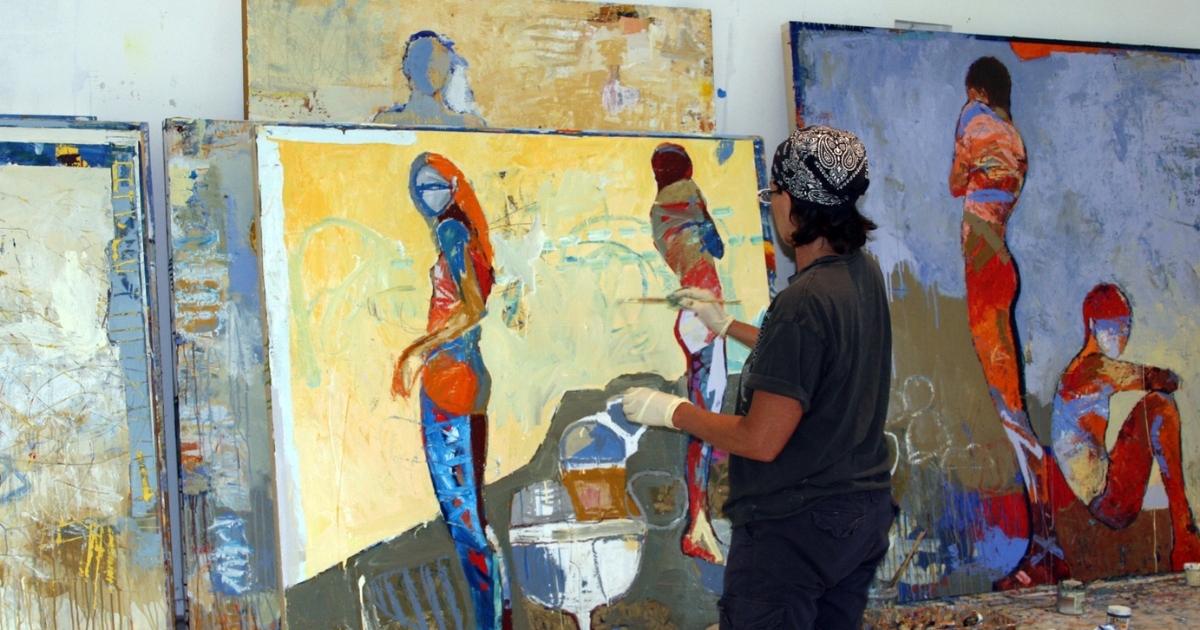
Image credit: Artist Jylian Gustlin Painting in her Studio © Jylian Gustlin
The journey to high-end replication started with ultra-precise scanning, which is still the core of what the company does. Its platform began while working on a research project studying Leonardo’s Mona Lisa. Arius generated a gargantuan 10-gigabit scan of the object, which included an unprecedented amount of information about the surface.
It was the first time anyone had properly scanned the world’s most famous painting, and it begged a follow up question. If Arius could know basically everything there was to know about the surface of a canvas, could they use that information to replicate the painting?
Arius partnered with Canon to find out, and together they were able to turn the wealth of data from these kinds of scans into hyper-convincing replications that look and feel exactly like the original. Their uncompromising level of detail combined with new textured printing technology has created a system that can produce stunning art objects.
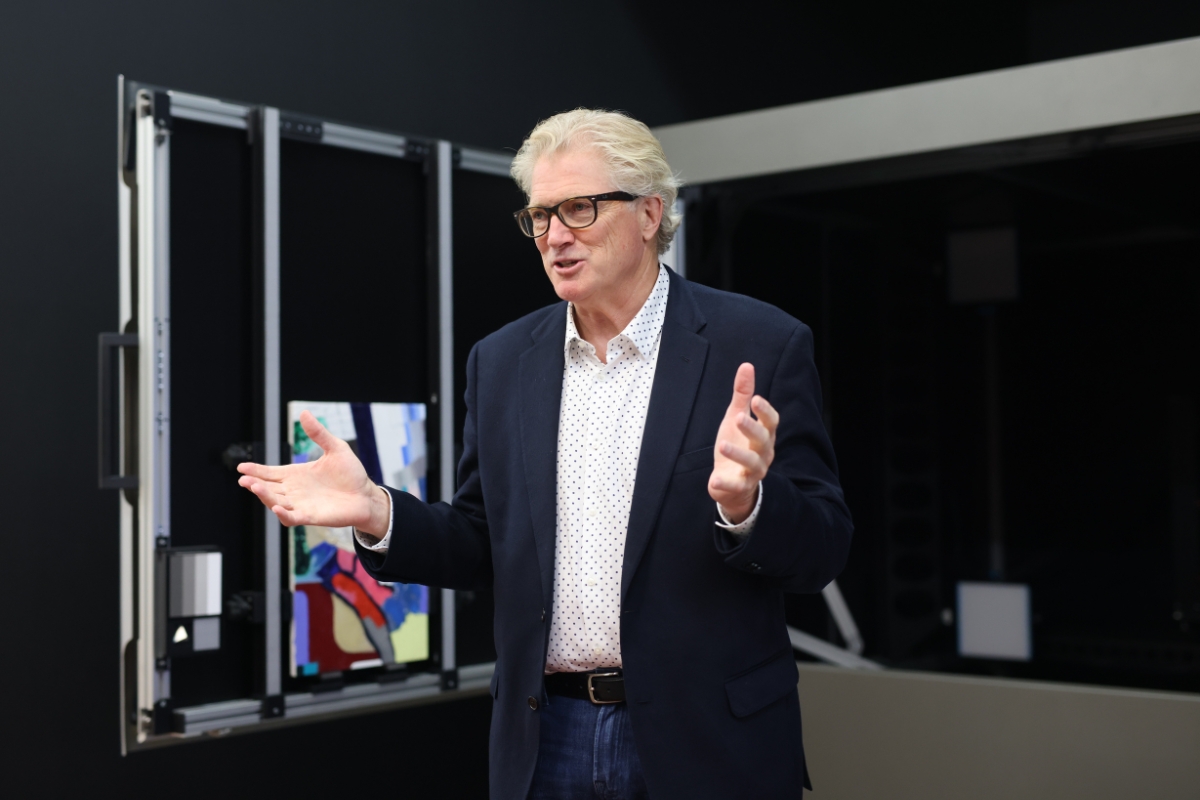
Arius Chairman Patrick Robinson © Jonathan Browning
Today, Arius has developed this process into a market-ready service that was the stuff of science fiction only a few years ago.
Working in collaboration with institutions like the National Gallery of Canada and the Tate Britain, one of the most compelling projects included creating copies of Johannes Vermeer’s Girl with a Pearl Earring, making it available to view while the original underwent an epic two-year restoration.
At their secure location in West London, we met with Arius Chairman Patrick Robinson to see how it replicates works of art.
Speaking on the core value of the service, Robinson says: “As art has become an asset class with ticket prices soaring over the past ten years, owners want to protect their investment as well as [enjoy] their treasured possessions. Now they can have the best of both worlds by allowing their art to appreciate at home or in safe storage whilst having a replication to enjoy at their residence, or other setting.”
The process begins with a scan of the painting using Arius’ in-house technology. This is lightyears ahead of a Xerox thanks to equipment able to measure differences in elevation on the surface down to 1/10 the thickness of a human hair. Despite the intricacy of the laser-based scan, it causes no invasive damage — the equivalent of an hour of museum light exposure.
Image left: Arius’ alta team proofing Jylian Gustlin Elegraph Print; Image right: Awakening by Jylian Gustlin Elegraph Print, printed at Arius facility in Richmond BC © Courtesy of Arius Technology
Arius provides a straightforward solution for a wide variety of challenges that art collectors and conservators have faced in the past - the most immediate and important is giving you an opportunity to fully enjoy the artwork you own without putting it at risk.
A notable application is for collectors who want to display work in high-risk settings, like superyachts. On this point, Robinson says: “Any insurer will bemoan the hazards of moving and installing art anywhere, but the superyacht environment presents particular risk. As well as handling and transport issues, accidents occur during fixing to bulkheads, crew may not be adequately trained, and the condition can be hard to monitor.” This has typically meant yachts often settle for generic art with little personal value. But with Arius, you can have a perfect replication of your favourite work while the priceless original sits safely in storage.
"Given that one cannot differentiate between the 3D textured replication and the original, the owner avoids both legal export risks as well as physical damage to the artwork,” Robinson continues. “Artwork on board suffers risks from the changing climate and also the hazard of accidental damage during installation and transport. Fine art on the move is extremely vulnerable, as any insurer will tell you."
Image left: Close up of a Monet textured print by Arius © Jonathan Browning
The collected data builds an Art Digital Master File (ADMF™). This has all of the topographic and colour information in one place, and the file can then be applied to a multitude of uses, like high-resolution textured replications.
As you can imagine, making copies of paintings indistinguishable from the original has massive implications for artists, the hospitality industry, collectors, museums, and art data analytics.
It also presents a more meaningful way to own art digitally. ADMF™ data can be tokenised in the blockchain, and the scan links the file to the physical piece and any traditional provenance material associated with that work. It enables the direct linking of NFTs to physical art objects, opening up the possibility of digital trade in physical art.
Robinson believes that, in time, all artwork will be stored safely on digital files in the same way that music is now stored digitally. “Really fine, old art, I think it all should be scanned. Every piece of music on the planet has been digitally remastered and stored, so why is art so far behind? Isn't it even more of a cultural icon than music to a certain extent?”
STALE Amsterdam Inspecting Elegraph Print 2 High Res © Courtesy of Arius Technology
It’s a refreshing use of digital technology in the art space. For the last few years, that overlap has often meant a retreat from enjoying our art in the real world, like online 3D exhibitions that are far cries from tangible art experiences.
The technology opens intriguing new avenues for artists to produce limited edition textured replications, meaning that their artwork can be enjoyed without compromise. In 2021, Arius worked with contemporary artist STALE AMSTERDAM to create limited edition replications of his meticulously layered portraiture. With his work, the surface of the work is essential, so even the most high fidelity print wouldn’t do it justice. But Arius can create replications with the exact texture left by the brush strokes of the artist.
Arius also represents a new horizon of possibilities for conservation and restoration. The ability to have in-depth analysis on the surface of a painting, as well as accurate replications, means museums will be able to maintain their most valuable objects for much longer spans of time.
Looking at it this way, the full potential of what this technology means really opens up. It’s a way to produce and preserve great art, almost indefinitely, without ever sacrificing enjoyment. The point of art, after all, is to be experienced. That has always meant the risk of deterioration, until now.
The way Robinson thinks of his company’s mission says it best. "As one of my art mentors Pandora Mather-Lees has taught me, you may have ownership to a piece of art, but we are custodians for what it represents for the sake of humanity."
Read Next:
Discover one of the Most Iconic Rosé Wines in the World
Uncovering Quality Craftsmanship with Silverlining Furniture
A Collaboration between Rossinavi and Parley

